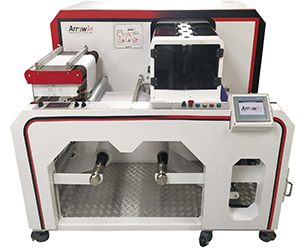Print Speed vs Quality: Which is More Important?
According to Google, print speed is the averaged measurement of pages per minute the printer is capable of printing. It may be used differently for color or monochrome inks, and doesn’t include processing and warmup time.
Print resolution measures the dot per inch of either an ink or toner a printer is capable of printing on a square inch of a substrate. Not the only deciding factor alignment, ink quality and the type of substrate also need to be taken into consideration.
Standard printing options include normal, high-quality and photo, although high quality looks amazing, they do tend to use more ink, which can quickly increase your operating costs.
The Benefits of Fast Print Speeds
Pages per minute and images per minute are two metrics your system utilizes to dictate your capable printing speeds.
Tips for Your Printing Speed Optimization:
1. Utilize the Native Language of the Printer – When utilizing native fonts, you take away the need to transition so you can spend more time printing
2. A Standard Print Form – Allows users to design, edit, update, and finally print all within the software. Since the form is written in the same language, you’ll be able to spend more time printing
3. Consider Printing Styles – Consider printing from a browser over label designing software. Part numbers utilized to gather the necessary info to adapt the print job to the printer
What Factors Affect Print Quality?
A paper’s brightness, opacity, sheen, smoothness, porosity, and size are all critical considerations, but printing processes may influence the printing parameters further:
Keeping Your Print Head Clean
One of the most important aspects of print quality is to keep your machine in top working condition, which means making sure the consumables, such as print heads, are working properly. This entails cleaning the printhead(s) once and a while in order to free them from damage from mineral deposits, the potential for streaking or bleeds.
You can do this by sprinkling some distilled water over the print head, which prevents any mineral contaminants from disturbing the machine components. Running a nozzle check on your printheads can also help determine whether you have a kink in your printing system. The bottom line: Clean the print head and print head nozzles to reduce inconsistency and increase the quality of your prints.
All in all, keeping your print head clean, can reduce or even prevent many of the potential problems that can come about while printing your labels or flexible packaging designs.
Print Head Pressure
The right print head pressure is also important to maintain optimal results. Too much pressure can muddle your results and make the colors too dark. Checking the hight of your print head can help you maintain the best quality prints.
The Type of Material You Use
The type of material you use is also important to consider. Paper quality is one of the most often overlooked components of print quality. If you use laser toner paper for an inkjet printer for example, you may end up with negative image quality, or may hinder your prints in unexpected ways. If you’re using inexpensive labels for direct thermal printing, heat sensitivity typically become a problem, and lesser quality materials sometimes demand regular tweaks to your printer settings to prevent barcode reading issues.
The Right Registration Marks
Reliability in color throughout the printing process guarantees that your brand remains consistent. Tight registration marks – typically those tiny black squares at the corners of your image, enables even the smallest features of your designs, including minuscule print, to be produced cleanly and sharply. High-quality label materials provide reliable ink absorption and brightness.
To re-cap, print speed and quality go hand in hand. Higher print speeds typically mean lower print quality, but that’s not always the case. There are many factors to consider when choosing the right solution for your company and product. Your image resolution is just one factor that affects the quality and durability of your designs.

Need Amazing Quality at Amazing Speeds?
Arrow System’s ArrowJet Aqua 330R gives you both!
· 1600×1600 at speeds up to 27 m/min
· The first printer on the market that doesn’t make users choose between efficient output and optimal quality
· Capable of flexible packaging and label printing
· Utilizes water-based pigmented inks that are both durable and food/pharmaceutical safe
Are you looking for the perfect label or flexible packaging system, but don’t know where to start? Arrow Systems, Inc has the expertise and innovation you need to create the best on-demand prints for your business. Call or click today for a FREE consultation!
